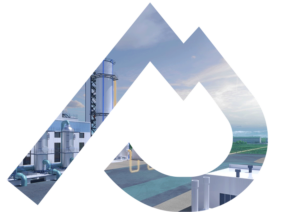
Industrial decarbonisation:
the Pycasso project as the final step
The worsening greenhouse effect requires drastic measures to be taken at world level, to reach shared environmental and energy goals. Actors in the secondary sector have a decisive role to play in reaching those goals by operating maximum industrial decarbonisation throughout the whole of their production cycle.
A proportion of decarbonisation already mastered by industry
French industry is deeply involved in applying decarbonation methods to its activities. It is already taking action, using three main levers:
- Energy efficiency, by modernising its equipment, resulting in a reduction in fuel consumption but with the same production levels;
- The integration of decarbonised and renewable energies, replacing fossil fuels with less polluting alternatives (biomethane, hydrogen, wind, solar etc.);
- Modifying production processes to achieve carbon frugality.
However, these high-performing solutions still have their limits, and industry has to deal with its inability to cut out a certain percentage of residual CO2. The IPCC (Intergovernmental Panel on Climate Change), the International Energy Agency, and ADEME, recommend carbon capture as a way of dealing with the problem of managing incompressible carbon.
CO2 capture: the ultimate lever in achieving carbon neutrality
Incompressible residues are therefore the ultimate problem in the industrial decarbonisation process. Capture is seen as a viable solution for collecting the carbon dioxide found in industrial fumes. The technique, which has been tested and approved for its efficiency, consists in washing gases/fumes expelled via chimneys, the aim being to isolate/separate the CO2 from the nitrogen by trapping its molecules, to prevent them being released into the atmosphere. Once concentrated, this CO2 undergoes cold distillation to liquefy it and purify it to 99.9%.
Once capture is complete, the CO2 must then be transported safely to its utilisation or storage site. As part of a CCUS (Carbon Capture, Utilisation and Storage) process this method can be used to decarbonise high-emission industrial activities, helping achieve carbon neutrality.
Forecasts estimate
that between 4 and 8.5 MtCO2/yr
are likely to be captured by 2030
in French industrial settings,
and between 15 and 20 MtCO2/yr in 2050.
Industrial decarbonisation FAQs
Many countries are involved in the fight against climate change and are committed to reducing their greenhouse gas (GHG) emissions, under the terms of the Paris Agreement. At the national level, French climate and energy policy has adopted the energy-climate law, setting out obligations that will allow the country’s carbon footprint to improve and achieve neutrality. The industrial sector is at the heart of the process, and its transition involves each individual, whether from an environmental or economic point of view.
Decarbonisation comprises all the techniques that help reduce carbon dioxide emissions, within a territory, a sector, a company, or at the individual level. At the industrial level, the State is working to implement a national strategy, aimed at taking action on one of the most polluting areas, in terms of GHGs (greenhouse gases). It sets out a framework for action and the measures to be taken, to reach a common goal, by maximising resources and solutions at each stage of the production cycle.
The secondary sector is already heavily invested in the process of decarbonising its activities, but runs into a proportion of CO2 that is incompressible, at the end of the production chain. The first target for industry is therefore to pursue and sustain actions it has already mastered, to optimise the efficiency of installations and reduce their fuel consumption. The second is around the replacement of fossil fuels, such as coal, with renewable energy (fuels derived from biomass, wind power, hydrogen etc.). The third is aimed at transforming manufacturing processes, to limit the discharge of carbon dioxide and the carbon footprint. The final target focuses on the capture and sustainable storage of residual CO2.
